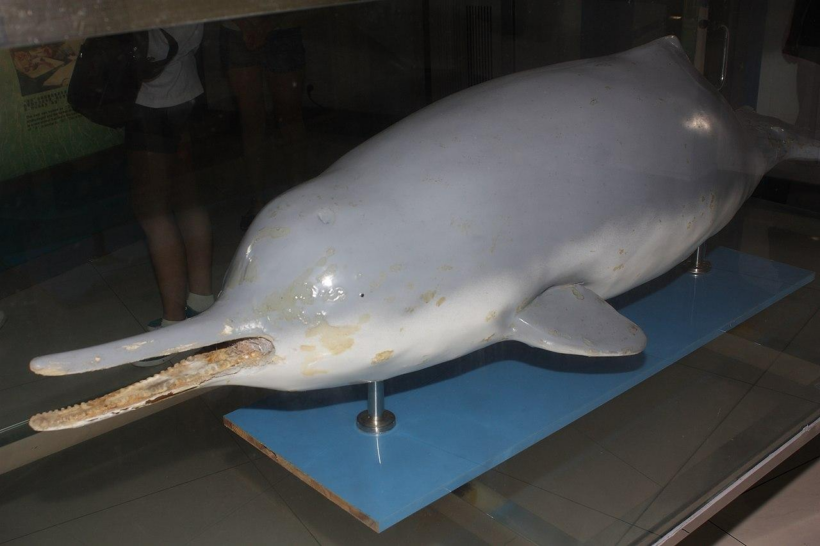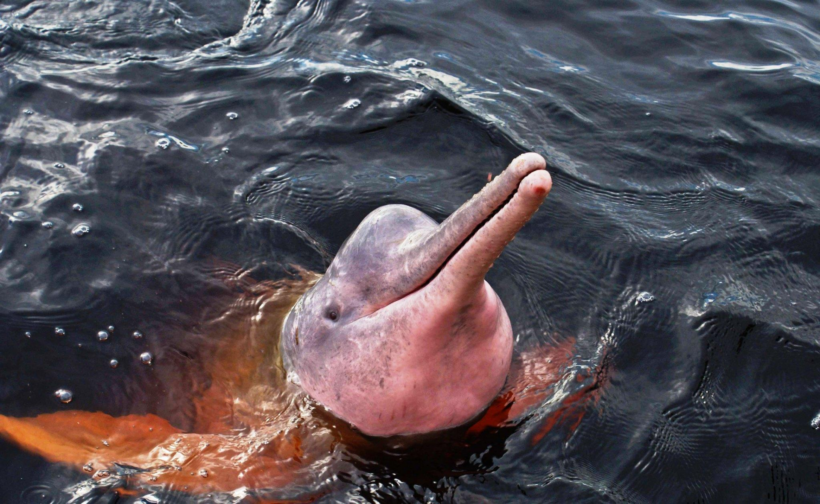By: Assaf Levy, BioDB
Dolphins are known for their playful nature and remarkable intelligence. Most people think of them as inhabitants of the vast oceans, leaping through the waves. However, there are dolphins that live in freshwater habitats, far away from the salty seas. These freshwater dolphins are lesser-known but equally fascinating creatures. In this blog, we’ll explore some representative species of freshwater dolphins, their unique characteristics, and their current status and population in the wild.
Meet the Dolphins
Freshwater dolphins inhabit rivers and lakes around the world. These unique dolphins are adapted to life in freshwater ecosystems, setting them apart from their more well-known ocean-dwelling cousins. Among the representative species of freshwater dolphins are the Amazon River Dolphin, the Baiji, and the Irrawaddy Dolphin, each with distinctive characteristics, conservation status, and population trends.
The Amazon River Dolphin (Inia geoffrensis) is one of the most renowned freshwater dolphins. Its striking pink hue makes it instantly recognizable. Often referred to as the “pink river dolphin,” it inhabits the Amazon River basin in South America. These dolphins are known for their remarkable adaptability to complex and ever-changing river systems. Sadly, these dolphins face various threats, including habitat destruction, pollution, and accidental entanglement in fishing gear, which have led to population declines in certain regions. They are currently listed as Endangered by the IUCN.

Wikipedia, “Chinese Baiji dolphin specimen Qi Qi” by Huangdan2060 | CC BY 3.0 DEED
Another freshwater dolphin that once graced the Yangtze River in China was the Baiji (Lipotes vexillifer). This unique species, also known as the “Yangtze River dolphin” or “Goddess of the Yangtze,” was notable for its distinctive long snout and white-gray coloration. Tragically, the Baiji was declared functionally extinct in 2006 due to various anthropogenic factors, including overfishing, shipping traffic, and habitat degradation [1]. This loss served as a stark reminder of the urgency of freshwater dolphin conservation.

Wikipedia, ‘Jumping Irrawaddi dolphin (Orcaella brevirostris)” by Dan Koehl | CC BY 3.0.
The Irrawaddy Dolphin (Orcaella brevirostris), is another species of freshwater dolphin. These dolphins are primarily found in the coastal and freshwater regions of Southeast Asia and South Asia, including the Irrawaddy River in Myanmar. What sets Irrawaddy Dolphins apart from their marine relatives is their unique rounded forehead and the ability to spit water from their mouths, which adds to their charm. Unfortunately, like many other freshwater dolphins, they face threats from habitat degradation, entanglement in fishing gear, and pollution, leading to declining populations in certain areas and currently listed as Endangered by the IUCN.
Conservation Efforts
Conservation efforts to protect freshwater dolphins, encompassing species like the Amazon River Dolphin, Baiji, Irrawaddy Dolphin, and Ganges River Dolphin, involve a multifaceted approach to safeguard these unique creatures and their habitats. One vital aspect of these efforts is the creation of protected areas and sanctuaries within the dolphins’ natural environments. These areas provide safe havens where these aquatic mammals can thrive with minimal human interference. Additionally, regulations are enforced to mitigate the unintentional entanglement of dolphins in fishing gear, a threat that has significantly impacted their populations. Promoting sustainable fishing practices plays a pivotal role, encouraging methods that reduce the negative impact on dolphin habitats and populations while ensuring the livelihoods of local communities.
Controlling pollution, whether industrial, agricultural, or related to inadequate wastewater management, is another crucial component of conservation. Pollution poses a grave danger to freshwater dolphins, as it can degrade the quality of their habitats and harm the aquatic ecosystems they rely on. Therefore, many conservation initiatives focus on reducing and mitigating these harmful environmental impacts.
Furthermore, habitat restoration and preservation are essential. Projects are launched to restore and safeguard critical freshwater habitats, such as riverbanks and wetlands, which are indispensable for the well-being of these dolphins. These efforts benefit the dolphins and contribute to the overall health of the freshwater ecosystems they inhabit.
In the face of a rapidly changing world, the conservation of freshwater dolphins symbolizes the preservation of unique and enigmatic species and the protection of the precious ecosystems they call home. It’s a testament to our commitment to safeguarding the planet’s biodiversity and the delicate balance of life in our rivers and lakes. By supporting these conservation efforts and fostering a deeper understanding of these dolphins’ vital roles, we can ensure that future generations will continue to marvel at these aquatic wonders. Their survival is intrinsically tied to the health of our freshwater ecosystems, a reminder that the fate of these remarkable creatures is intertwined with our own. As we work together across borders and boundaries, we secure not only their future but also our shared responsibility to cherish and protect the natural world that sustains us all.
Resource:
[1] Wood, Alison. “The baiji – the first dolphin to be declared extinct in modern times.” Whale and Dolphin Conservation, 18 October 2012, https://uk.whales.org/2012/10/18/the-baiji-the-first-dolphin-to-be-declared-extinct-in-modern-times/.

About the Author: Assaf Levy is the Founder & CEO of BioDB.com – a group tasked with collecting conservation data, raising awareness for biodiversity loss, and fundraising. https://biodb.com/






